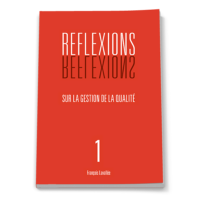2014 marked a milestone in violence.
Executions of ostages by radical religious group was but the latest in an escalating series of events that the world has been victim of in the last few decades.
And the usual response expected from the world power came swiftly : war.
If history taught us anything it is that war does not solve anything.
But we keep on fighting.
War on terrorism. Hundreds of billions since 9/11. Spurred by thousand of sudden deaths.
War on drugs . Billions and billions since the Nixon initiative in the seventies. The “evil” hippies of the sixties certainly required to be reined in. … thousands upon thousands of overdosed junkies and violence in our street.
War on infectious diseases. Billions annually. Parts of which from individual donations, parts financed by pharmaceutical companies and parts from our tax dollars. Millions of death every year. The recent Ebola outbreak reportedly killing a few hundreds very day….or, if official estimates are to be believed 3000 deaths in the last 6 months. The annual flu kills roughly 30 000 people annually. Porcine, avian or whatever variation you can think of ….
War on non-quality….hmmm
How much do we spend on this anyway?
What are the real impact on human lives?
On our employees motivation?
On our organizations performance?
But in all cases a common thread : short term vision.
Terrorism? : airstrikes!
Costly. Very visible impact physically.
I am not too sure about the real impact on the outcome however apart from the fact that the ire from those radical group will surely rise a notch or twelve!
Drugs? : More police and more street crooks incarcerate.
I am not sure this had any effect on the drug cartels who probably have more money to pay their lawyers that the petty drug dealer already in prison….
Viral outbreak?
Massive killing of chickens, pigs and mad cows. Quarantine of entire population unwilling to be imprisoned. Urgent shipping of a few thousand experimental doses of vaccine.
The outbreak is here. We don’t know why. Yet.
Choose your disease, it does not matter. We did not keep track of its evolution and will not be able to prevent a few isolated cases to fly to a densely populated city. And insufficient research will not help us prevent the next outbreak. Moreover, the recent H1N1 pseudo epidemic forced some companies to produce tons of doses of vaccines….only to be heralded as a a badly orchestrated scheme to make those companies richer… Some of those company are my clients and their employees admitted being ashamed to mention the name of their employer… ohhhhh, human nature always tops any conceivable plague in the quest for the ultimate killer.
Quality?
Most industries will follow the same basic steps as far as quality management is concerned.
1- Quality by law : Forced to obey after a scandal raised the public awareness and the government voted a new regulation…the industry had to ruefully adapt.
2- Quality by design : yes Juran wanted built-in quality. But not all industries are equal in their “design”. In some cases the level of quality of their design would be akin to have a mechanic follow every car on the highway…just in case it would need an adjustment.
3- Quality by creed : when the only reason to produce quality pro cuts is to increase profits. Mind you, I have nothing against it if the quality is so high that customers are really willing to pay more (Apple comes to mind….) and feel it is really worth it. This also promote a different frame on mind where non-valued added steps are eliminated. Deep thinking is required to decipher what is really a quality requirement or simply a regulation misunderstanding resulting from a figment in a regulator’s mind.
4- Quality by people. Yes! Quality IS people. This is when everybody understand the subtle but essential difference between training and education. Training is to teach how to do, education teaches how to be. Training is the “how” whereas education is the “why”. And we all know the coming workforce are know as the “Y” !!!
5- Quality by culture : Emile Durkheim said it best :
“When mores are sufficient, laws are unnecessary; when mores are insufficient, laws are unenforceable.”
Deep, deep knowledge of quality. R. Pirsig even writes about the intrinsic talent of any human to “know” what is quality.
But THAT takes times.
In a recent conversation with a high level executive of an international company I asked him what would be the best way to approach his colleagues about my services as an organizational biologist. His answer, appropriately succinct :
Talk about rapid culture change.
RAPID culture change?? Oh boy… do these words fit in the same sentence!!!
Did I mention that the common thread in those challenges was short term vision?
A recent video
by John Medina is about the human brain performance envelope.
“the human brain appears to have been designed to solve problems related to surviving in an outdoor setting, in unstable meteorological condition and to do so in near constant motion”.
Aha!!
Short term vision is here!
The human brain is NOT designed to sit in front of a computer or comfortably in an air-conditioned boardroom and plan for the next 5 years.
No.
We need action, fast and dramatic, ever-changing challenges and results NOW!
Or…. we can try to fight of evolutionary urges and think a little more.
Deming start his 14 points with vision.
Crosby ask for quality engagement clarity from management
Juran and Shewart start the cycle with PLAN and add a reflection step half way through.
It is all there.
Deep thinking.
Long term vision.
Action AND Education.
How much more will we waste on those wars while cutting education budget at the same time.
It is time we start teaching each other.
To end this diatribe, a bunch of quotes….
Teaching is learning twice.
J. Joubert
Learning is accepting to change.
A. N. Onymous
With people, slow is fast and fast is slow.
S.R. Covey
Change is slow but it happens very suddenly.
D Bryant.
© Copyrighted material Aliter Concept 2015. Please do not print or copy without permission from the author.
BUT DO SHARE IT using the social network buttons !!





